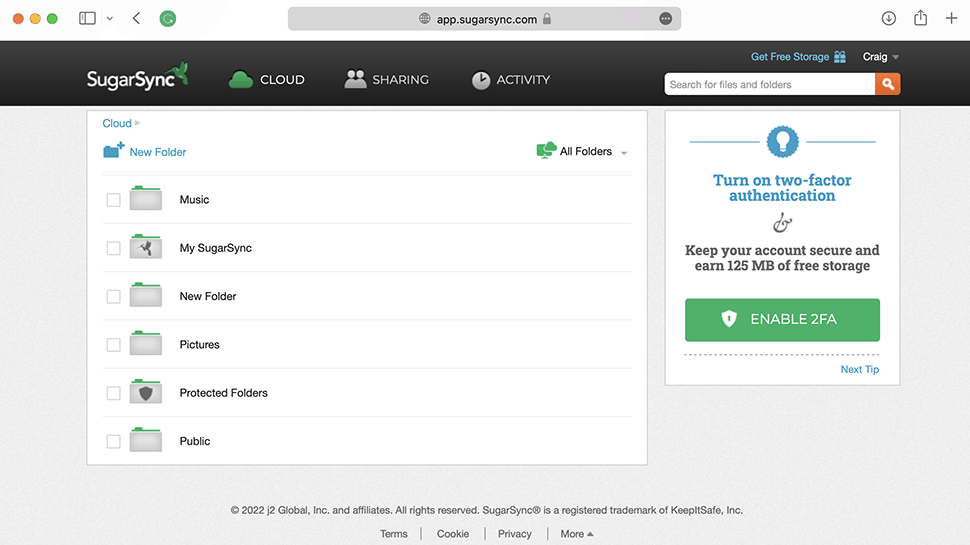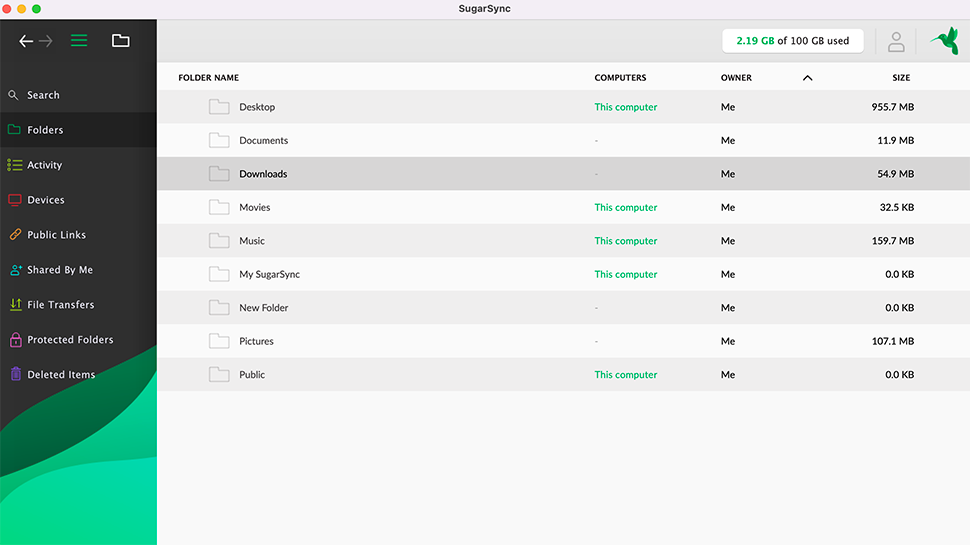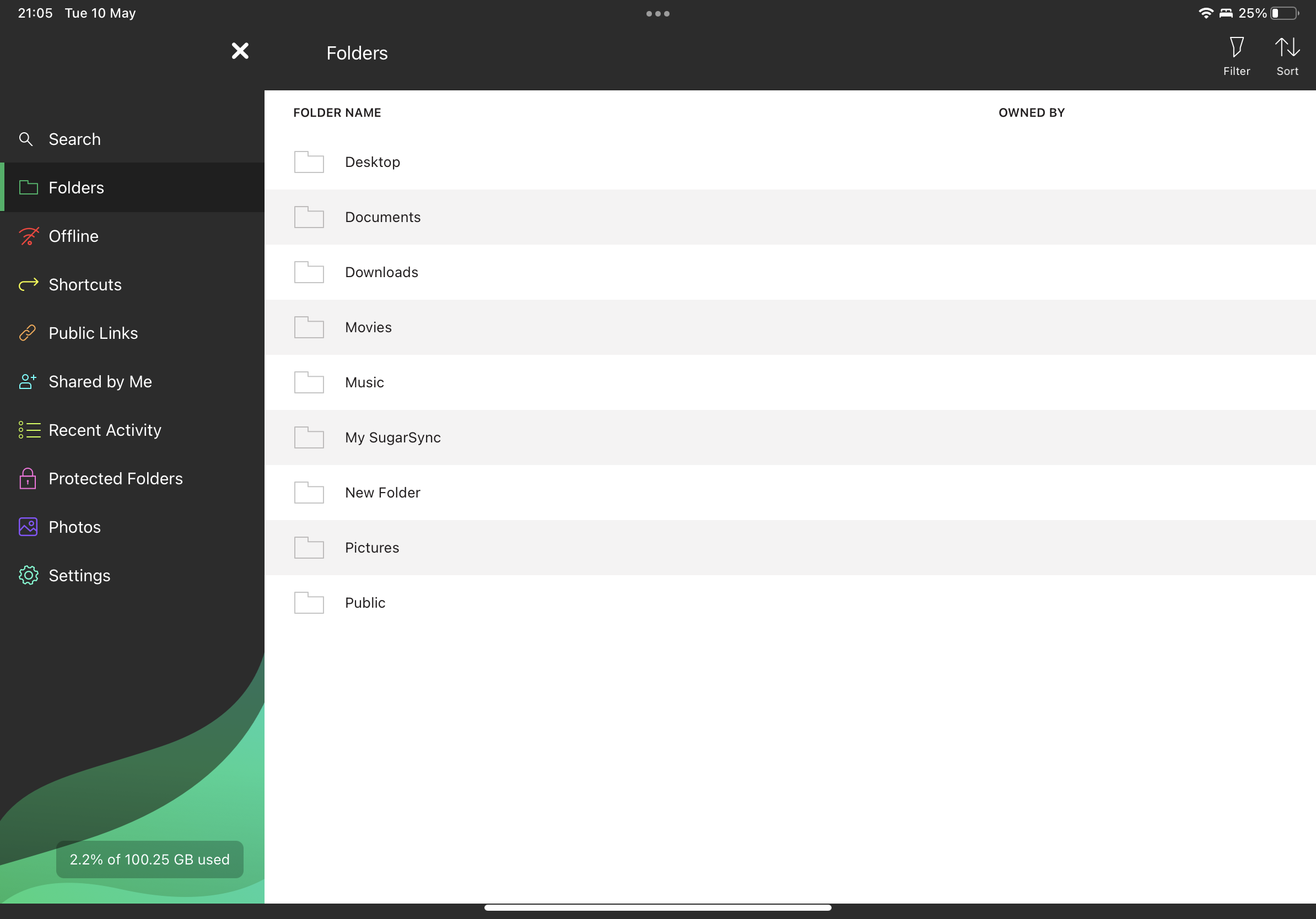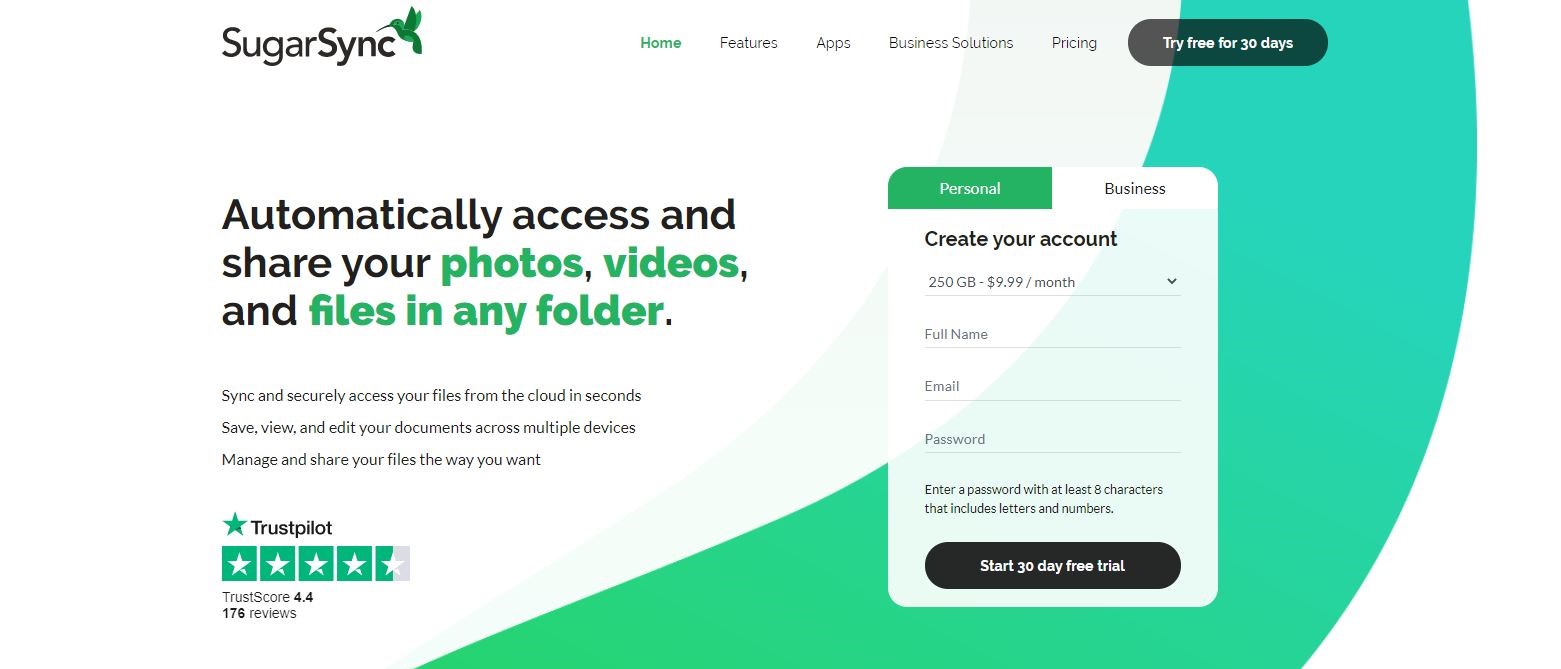TechRadar Verdict
SugarSync offers ease of access and simplicity in use, providing straightforward file and cloud syncing. It would garner a higher recommendation were it not for the high pricing, and rival software that's more modern-looking and faster in operation.
Pros
- +
High-strength AES 256-bit encryption
- +
Supports an unlimited number of devices
- +
Easy to use software apps
Cons
- -
Too expensive
- -
Apps sometimes feel clunky
- -
Limited browser experience
Why you can trust TechRadar
SugarSync is one of the longest-running cloud backup services around, as it grew out of Sharpcast which started in 2004. The question is whether it has what it takes against the competition of newer, more nimble competitors? Similar in style to Dropbox, SugarSync enables you to sync selected files and folders locally, with the copies in your cloud storage.
Any changes made on a computer are instantaneously synchronized back to the copies in the cloud. With SugarSync installed across multiple devices, the latest versions of all your files are ready and waiting for you at all times, without the need for additional devices such as USB drives, or file transfer services - so long as you have a connection to the Internet.
- These are the best cloud backup services available

SugarSync features
SugarSync offers plenty of functions and features, more in fact than anyone in need of a cloud storage facility would probably want. For example, the ability to back up any folder across multiple computers, support for file versions, and no limitation on individual file sizes are strong points. We also appreciate the excellent platform coverage too, with apps across desktop and mobile platforms including Windows, macOS, Android, and iOS.
Changes you make to your files are instantly synced back to the cloud as well as your other devices, which means that there is no need to set up a schedule, helping to avoid lost documents created or modified during other backup tools’ inactive periods. Photos and videos are also backed up automatically from phones and tablets, though we feel this could be extended given that so many people rely on these more portable devices for many of their daily tasks. Things like messages and locally saved files, as such, are not backed up as part of SugarSync’s mobile apps. The backup service does work with NAS drives and external hard drives, though only when using the desktop client for Windows. The other limitation is that this is only available with a business account.
As another option, there is a web interface, but it is pretty basic, and only allows you to view your files, and to download or share them as needed. Competing services like OneDrive, Google Drive, Dropbox and iCloud Drive offer more in this area. However, the portal is a help when you need to get at your files on a computer without having SugarSync installed.
Desktop clients with SugarSync enabled allow you to control the bandwidth they use, so your Internet connection does not collapse with the load of multiple uploads and downloads. This is controlled in three vague settings, ranging from ‘low’ which limits speeds to 10kB/s to an undefined ‘medium’, and an unlimited ‘high’. The backup process can be paused at any time as well, to preserve the quality when you've got high bandwidth video streaming or video calling to perform. Such granular control is reserved for the desktop versions of the company’s software, so don’t expect to be in total control when using a handheld device.
Maybe of more tangible use is the support for downloading files on smartphones and tablets. SugarSync is primarily a backup service rather than a cloud drive, however this begins to bridge the gap, offering support for users to have offline access - particularly handy when travelling. This does not impact your ability to back up new or modified files when connection to the Internet is reestablished.
Among the many features that are offered as part of the Personal plans, it’s refreshing to see that support remains for multiple devices with more and more companies beginning to restrict licenses on a per-computer basis. Other features include remote device wiping, online editing which is great for collaborating with individuals who do not have their own SugarSync account, and online and phone support which we found to be reasonably quick.

SugarSync interface
The SugarSync software is quite simple in use. For most users, you’ll configure it once, and not need to change it afterwards. You can select the folder you wish to sync with SugarSync’s servers, and be up-to-date with other computers and mobile devices you've signed in to as well. It’s also a particularly handy way to transfer photos and videos from mobile devices, along with the obvious security benefits brought with having consistent backups. This means that, as long as you have an active Internet connection, your files will continuously back up without prompt.
Stored files have five previous versions held from subsequent updates by default. If needed, you can mark a folder as protected and define a larger number of changes to be tracked in the future. This option is especially useful against ransomware, to allow you to recover files prior to any nefarious encryption occurring, in case that scenario arises.
We encountered no problems with navigation around the SugarSync apps for desktop or mobile, and despite finding that the process was slow and clunky in certain places previously, we are pleased to find that the software has been updated to offer a smoother experience. Upload speeds were as expected and in line with other cloud backup services, though download speeds were a little underwhelming from a browser. Unfortunately, the same is true of the desktop client, despite our rather high-speed broadband connection.
The web interface, where you can view your files and shares in a browser, is similar to the desktop clients: well-presented and easy to get around. It doesn’t quite have the kind of slickness that Dropbox or Google Drive has, but does retain most of the functionalities we have become used to. Truth be told, it kind of feels like an interface from five years ago and is underwhelming in contrast with the more modern apps, however it gets the job done.
It’s worth noting that there is a 300MB file size limit for uploads using the browser, so installing the desktop client is a must. Having said that, the whole purpose of a cloud backup service is to allow a piece of software to run in the background, so this shouldn’t be an issue for most users.

SugarSync security
The concern of customers for cloud storage currently is the security of their files in the cloud. With this in mind. SugarSync uses AES-256 bit encryption for processing all files to and from its servers, which we appreciate. It lacks end-to-end encryption though, and that means that SugarSync itself could be peeking at your data - although this is more of a hypothetical concern.
Just keep in mind that not every cloud storage service offers end-to-end encryption, and the benefit of not having it is that if you forget your password, SugarSync staff can get your files back to you. The downside though is that SugarSync staff could also hand your data over to authorities, such as law enforcement, which wouldn't be possible with end-to-end encryption.
A previous gripe of ours was that the company didn’t offer two-factor authentication (2FA) despite its other efforts on the security front. SugarSync has listened to its customers, and now offers this on all accounts.
SugarSync pricing
Personal plan for SugarSync start at $7.49 (about £6) a month for 100GB of space, $9.99 (about £8) a month for 250GB of space, and $18.95 (about £15) a month for 500GB of space. Business customers will pay $55 (about £45) a month for 1TB of room. All of these plans offer a 30-day free trial so you can assess what SugarSync is about before committing. Unfortunately, users are required to provide their payment information to get the free trial.
Keep in mind that Google, Dropbox, and Apple serve up to 2TB of cloud storage for about $10/£7 a month or even less. This makes SugarSync quite expensive. Furthermore, SugarSync simply doesn't have the features or functionality to justify the extra cost. The service really would need to revise its pricing strategy given the fierce competition in the area.
Small consolation comes in the 10GB of free storage that becomes available with each friend that you refer, who then goes on to sign up for a paid account. In reality, few users will benefit from this.
Final verdict
Putting pricing aside for a minute, SugarSync offers a relatively impressive cloud storage service. It does its job as advertised while offering some neat features we seriously like. Being able to sync across multiple devices works really well, along with sharing files and folders with other people. Also, with a few caveats the service does keep your data quite secure.
Quite frankly, we just can’t get past the pricing though – plenty of alternatives are cheaper, better designed, and look to be updated more often. If we hazarded a guess to its popularity, we can only assume SugarSync has plenty of existing, legacy customers who are happy to pay, as it's hard to see why anyone would sign up now considering the other options on the market.
- We've also highlighted the best cloud storage
Mark is an expert on 3D printers, drones and phones. He also covers storage, including SSDs, NAS drives and portable hard drives. He started writing in 1986 and has contributed to MicroMart, PC Format, 3D World, among others.

